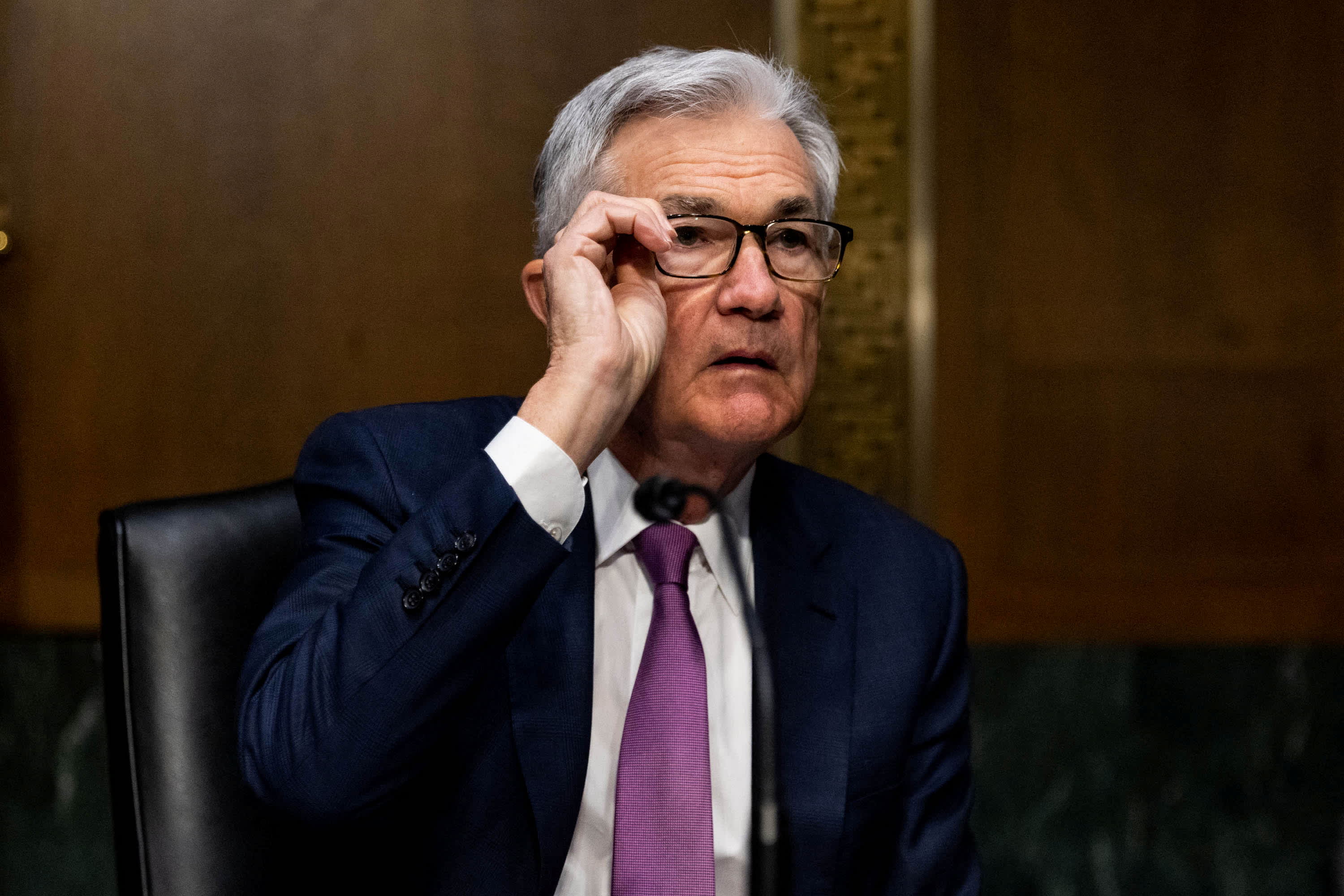Federal Reserve Chairman Jerome Powell is tasked with telling Congress this week that the central bank will be doing more to control inflation at a time when markets expect it will be doing less.
With fears over the Russian invasion of Ukraine causing turmoil in the financial world, Wall Street has quietly dialed down its expectations for Fed action.
Where markets had been expecting the Fed to raise interest rates up to seven times in 2022, recent pricing now indicates just five moves. That would be the equivalent of bringing the Fed’s benchmark short-term borrowing rate up about 125 basis points, or to a range between 1.25%-1.5%.
The shifting winds mean Powell has a tightrope to walk as he explains during two days of congressional testimony that his institution is committed to taming inflation while also being mindful of the geopolitical turmoil.
“He has to thread a pretty thin needle. The balancing act is going to be difficult,” said Mark Zandi, chief economist at Moody’s Analytics. “My sense is he leads with the uncertainty that this all creates given that the Russian invasion could take many different paths, each one darker than the other. He’ll reinforce the point that in a period of such heightened uncertainty, it might make sense for the Fed to be a little more cautious in enacting policy.”
Up until a week or so ago, markets had been expecting the policymaking Federal Open Market Committee to approve 25 basis point hikes at each of its remaining seven meetings this year. There even was a strong lean to the first move, at the March 15-16 meeting, being 50 basis points.
Russia’s attack has taken that off the table, at least for now.
“Play it by ear would be his best message,” said Peter Boockvar, chief investment officer at Bleakley Advisory Group. “That would allow him to sort of skate around the very difficult position that he’s currently in. We’re going to deal with inflation, but — and that ‘but’ is let’s see how the economy goes from here.”
Economists largely expect growth to be solid this year if a bit less than in 2021, which was the strongest since 1984. Fed officials in December projected GDP to accelerate at a 4% pace in 2022.
However, unrelenting inflation, at its fastest level in 40 years, along with the prospects that the Russia-Ukraine situation could add to inflation and further complicate supply chains puts another wrinkle in the Fed policy outlook.
“We’re entering a period of stagflation,” Boockvar said, referring to higher inflation and low growth. “The question is, does [Powell] focus more on the ‘stag’ or does he focus more on the ‘flation’? Just based on the history of the post-Volcker way of running monetary policy, the Fed focuses on growth.”
Other economists, though, disagree.
In a note to clients Sunday, Goldman Sachs said “very high inflation” this year “should make an easy case” for seven rate hikes this year. Bank of America also has not relented from its forecast of seven moves, and Citigroup economist Andrew Hollenhorst wrote Tuesday that “the market has been a bit too quick to price-out the potential for a 50 [basis point” hike at this month’s FOMC meeting.
Nonetheless, as of Tuesday noontime, the market had completely taken a half-percentage-point hike off the table and in fact assigned a tiny possibility to no move at all, according to the CME Group. Futures pricing can be volatile, so the probabilities could swing back if inflation slows or the Ukraine situation is resolved.
Powell, delivering his mandated semiannual update to a House panel Wednesday and then to a Senate committee Thursday, will have to address a wide range of views on where it should be at a critical time for monetary policy.
“We think Powell will emphasize that amid heightened geopolitical uncertainty the Fed remains focused on its macro objectives and will continue to move ahead with policy normalization with a view to bringing inflation back towards target while sustaining employment,” Krishna Guha, head of central bank policy strategy for Evercore ISI.
“We think he will acknowledge that the Russia Ukraine crisis and its stagflationary impulse from higher energy prices (inflation higher, growth lower) creates additional challenges for policy,” Guha added.
